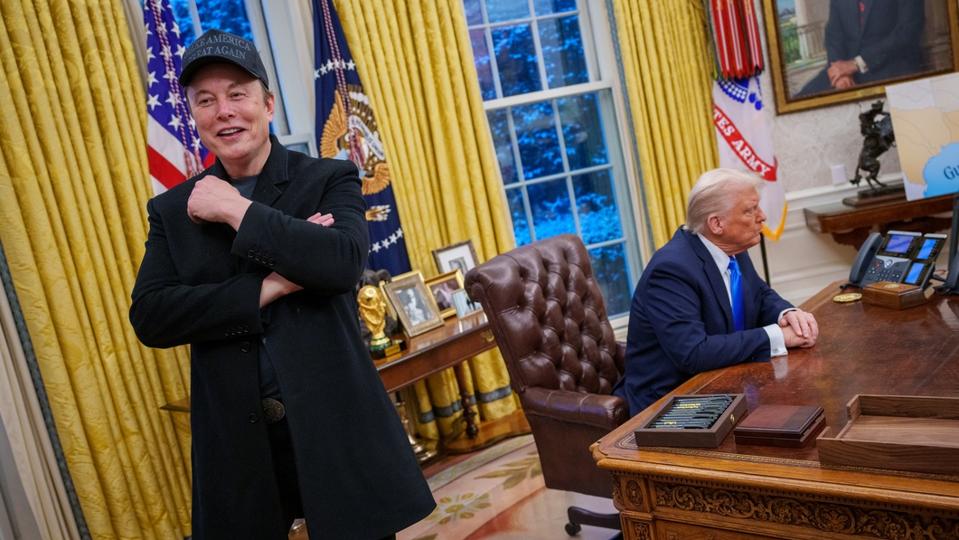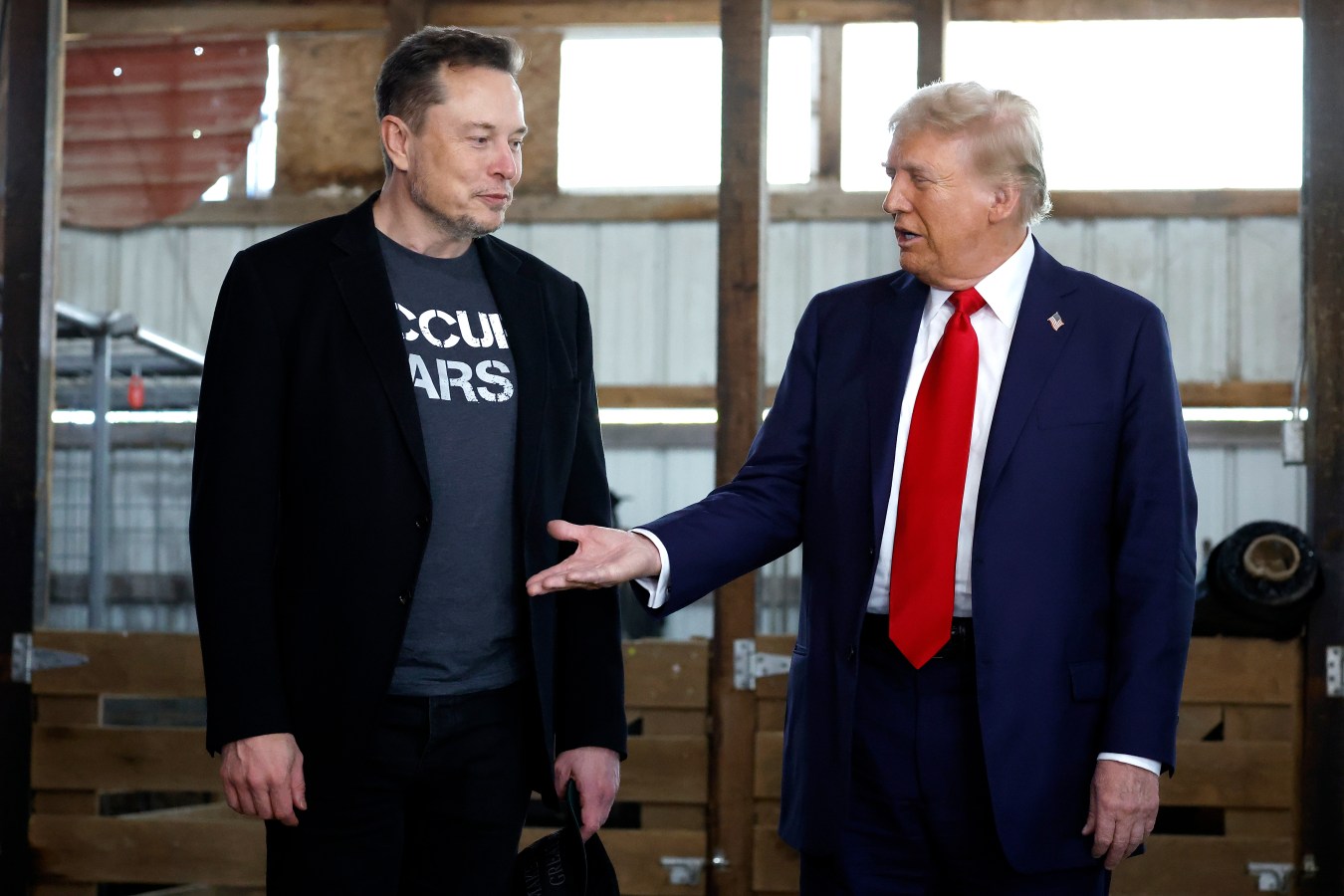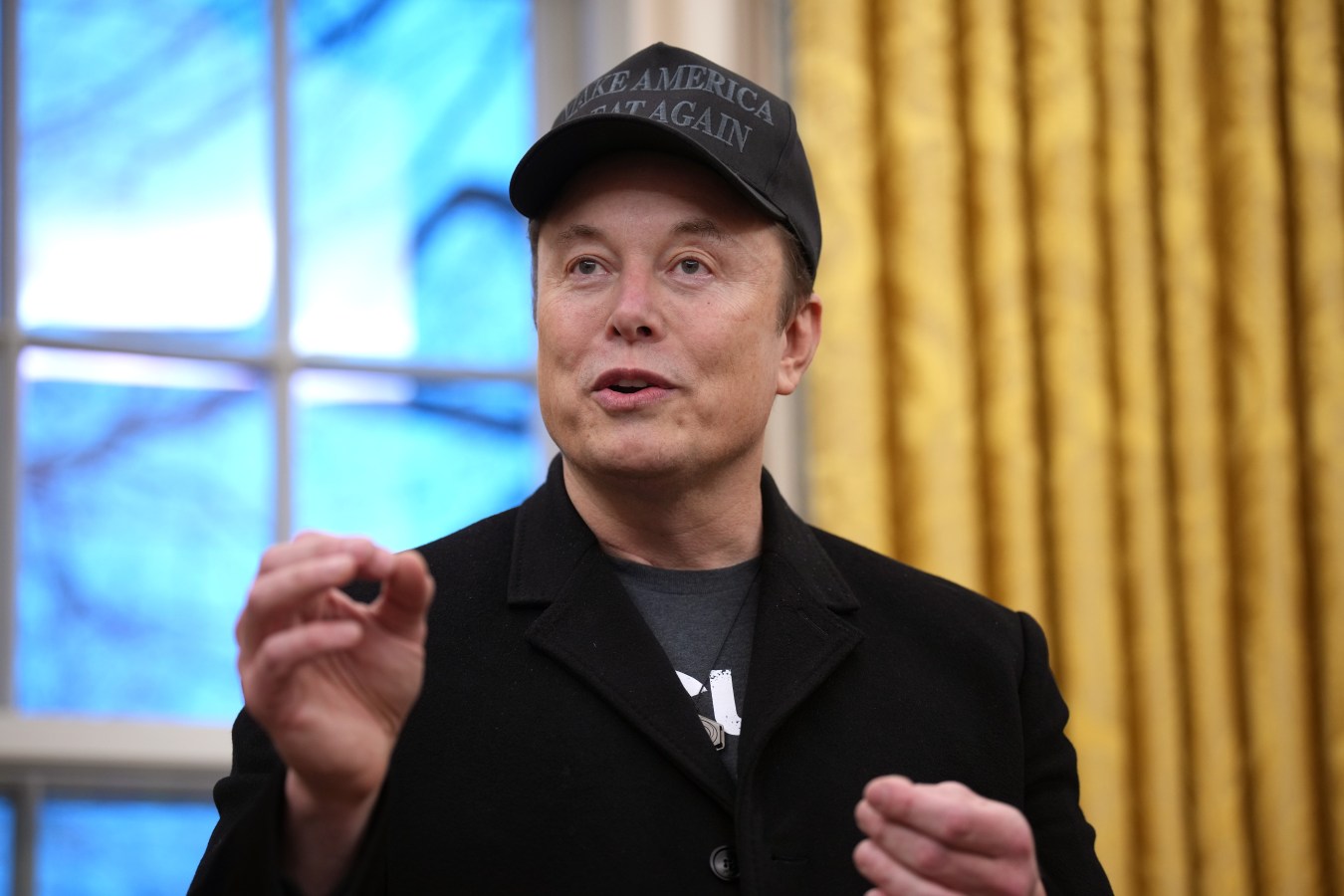With Elon Musk’s cost cutters due any day, military leaders are eyeing bloated contracts, programs and legacy weapons systems.

DOGE is coming for the Department of Defense.
After taking the knife to a growing roster of federal agencies and causing widespread panic at others, employees from Elon Musk‘s Department of Government Efficiency are set to arrive at the Pentagon in the coming days, a person briefed on the effort told Forbes. Charged with cutting $2 trillion from the federal budget, they could bring an unprecedented shakeup to America’s sprawling military and its near $1 trillion budget.
For decades, legislators on both sides of the aisle have struggled to rein in wasteful defense spending with little success, as the Pentagon has been repeatedly embarrassed by reports of egregious overspending — millions in untracked inventory, failed audits, the infamous $10,000 toilet seats. In an interview during Sunday’s Super Bowl, President Trump said he expected DOGE’s review of the military will find “hundreds of billions of dollars of fraud and abuse.”
Now, even as Elon Musk’s cost cutting machine faces mounting court challenges and threats from Democrats, Defense Secretary Pete Hegseth is rolling out the welcome mat. “I’ve been in touch with Elon Musk, who’s a great patriot interested in advancing the America First agenda,” he said on Fox News Tuesday. “There are plenty of places we want the keen eye of DOGE, but we will do it in coordination.”
Hegseth said he would focus on cuts to weapons acquisitions and procurement, climate programs and headcount at headquarters. DOGE staffers will be employed directly by the Defense Department to focus solely on executing its cost cutting mandate, a person with direct knowledge said.
“We are seeing the chicken come home to roost.”
Chris Miller, former acting Secretary of Defence
Ahead of their arrival, Pentagon leaders have already begun targeting legacy initiatives by discussing potential cuts to fighter jet programs — long a target of Elon Musk, who has called the F-35 program “obsolete” — pausing upcoming contracts and merging different operations, according to a dozen current and former Pentagon officials and others with knowledge who spoke to Forbes.
“The existing ecosystem of the prime contractors, and legacy cold war personalities, knew what was coming, and decided to ignore it,” said Chris Miller, the former acting Secretary of Defense and a co-author of Project 2025, the conservative blueprint for the Trump administration. “And we are seeing the chicken come home to roost.”
The Air Force, for one, faces major upheaval as it hopes to defend the future of manned aircraft amid the rise of drone warfare. Last week, Hegseth paused planning meetings for a reorganization effort designed to better combat China, which included plans for a sixth generation fighter jet. Any cuts to the program would introduce uncertainty about the Air Force’s future manned combat capabilities only two weeks after the service gave General Electric and Pratt & Whitney billions to continue developing new engines for the proposed jet.
The Pentagon and the White House, which is overseeing communications for DOGE, declined to comment. The Air Force did not respond to requests for comment.
Pentagon leaders are also focused on merging three organizations that focus on incubating new technology: the Defense Innovation Unit (DIU), the Chief Digital and Artificial Intelligence Office (CDAO) and the Strategic Capabilities Office, according to three sources. Multiple sources said this move could see the shuttering of the Defense Digital Service, a program aimed at bringing in private-sector tech talent and currently overseen by the CDAO.
“Bringing these organizations together creates a rare opportunity to align innovation efforts with clear, unified goals that can directly enhance national security,” said Tyler Sweatt, CEO of software startup Second Front, which helps companies access military networks, and has received funding from DIU, which has an annual budget of close to $1 billion.
The future of the CDAO’s largest program is also uncertain. Officials this week paused an upcoming contract competition for one of the Pentagon’s primary AI platforms used for making battlefield decisions, known as ADVANA (a mashup of Advanced Analytics), according to a Pentagon official with direct knowledge. Contractor Booz Allen had been awarded a $3.2 billion, three year contract to run ADVANA back in 2021, but a recompete that would turn it into a $15 billion, 10-year contract was supposed to move ahead in coming months. Booz Allen declined to comment.
Part of Hegseth’s strategy has involved embracing Silicon Valley. Last week, he met with Alexandr Wang, the CEO of AI unicorn ScaleAI, according to two people with knowledge of the meeting. Scale AI has at least $300 million in contracts from the federal government to provide data labeling services. (ScaleAI declined to comment on the meeting.)
Wang was also among a group of leaders from top Silicon Valley defense tech companies — including Anduril, Palantir, OpenAI and Vannevar Labs — who attended a high profile military AI summit last week. The event was hosted by Indo-Pacific Command, which directs U.S. military forces in the region, according to an attendee list seen by Forbes; cloud giants Amazon, Microsoft and Google were also in attendance.
And at least one tech leader is joining the DoD. Emil Michael, a former Uber executive, was selected by Trump to be the undersecretary of defense for research and engineering, where he will oversee the famed Defense Advanced Research Projects Agency, better known as DARPA, which has a $4 billion discretionary budget used to develop technologies for warfighters. Announcing his appointment, Trump said Michael would “ensure that our Military has the most technologically sophisticated weapons in the World, while saving A LOT of money for our Taxpayers.”
Despite talk of abandoning expensive weapons systems in favor of low cost drones, prime contractors stand to benefit from some of Hegseth’s big ticket items. For example, Trump’s ‘Iron Dome,’ a plan to build a new missile defense system to take out threats like hypersonic and cruise missiles, could direct billions of dollars to companies like Lockheed Martin and RTX, if it’s feasible. “We can shoot down cruise missiles with lasers now, and that could be part of the solution,” Lockheed’s CEO Jim Taiclet told analysts last week, adding, “I welcome DOGE’s effort and the administration’s effort to reduce the bureaucracy.”
Pentagon officials can look to other agencies for what to expect from DOGE’s arrival. The initiative, which posts a rolling tally of apparent cost cutting measures on X, has claimed credit for ending leases overseen by the General Services Administration, deleted gender identification on the Veterans Affairs website and gained access to sensitive U.S. Treasury payments data. Musk allies have also been installed in key positions at Technology Transformation Services, the IT arm of the federal government, and demanded key admin access, as Forbes reported.
Perhaps most dramatic is the DOGE-driven implosion of USAID, the $70 billion foreign aid agency. Hegseth has aimed to calm concerns around DOGE’s arrival at his department. “The defense department is not USAID,” he said. “USAID has a lot of problems…pursuing globalist agendas that don’t have a connection to America first.”
Jeremy Bogaisky contributed reporting. This story was originally published on forbes.com
Update: This story has been updated to remove reference of Shield AI attending the AI summit; the company’s leaders did not attend the event.
Look back on the week that was with hand-picked articles from Australia and around the world. Sign up to the Forbes Australia newsletter here or become a member here.


